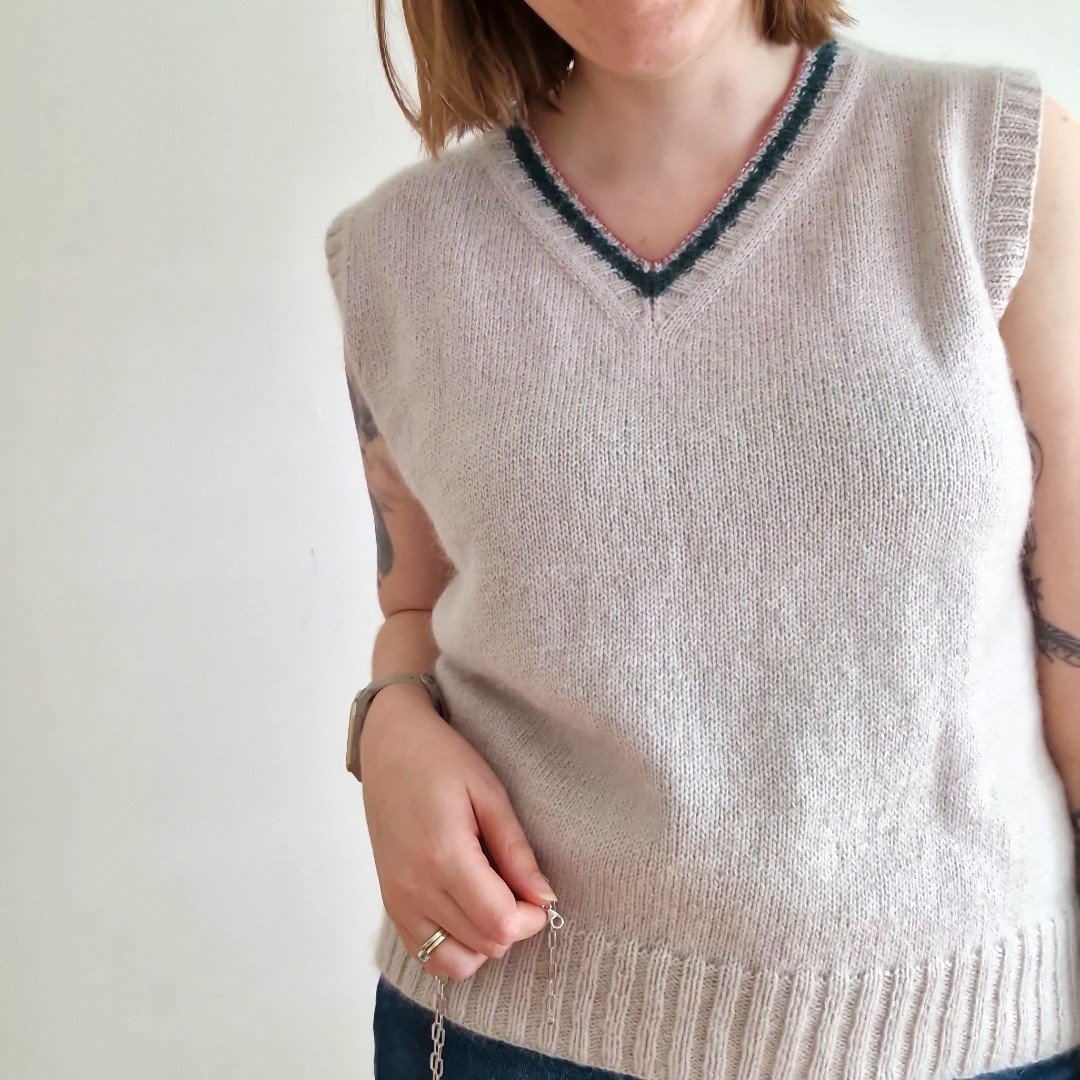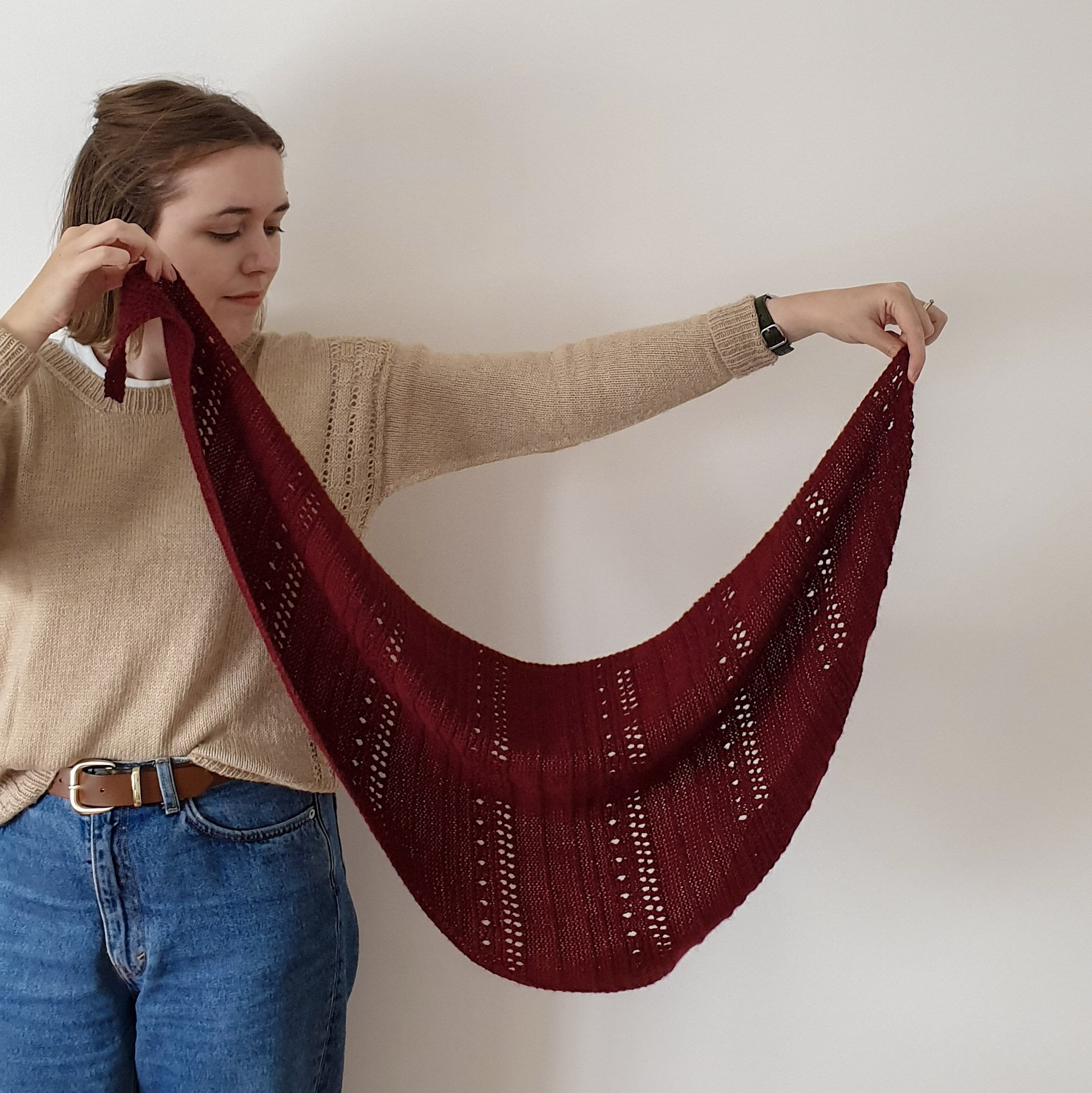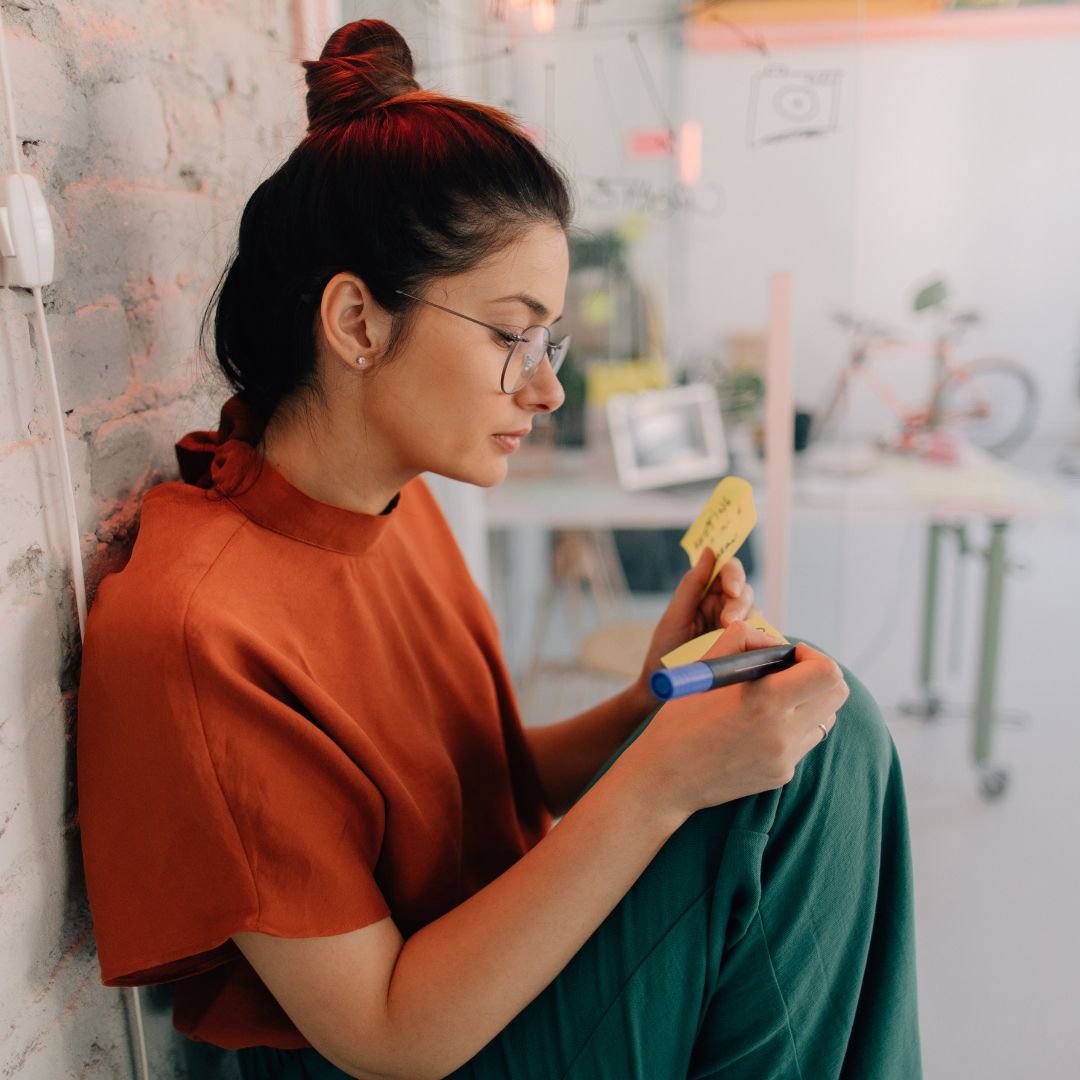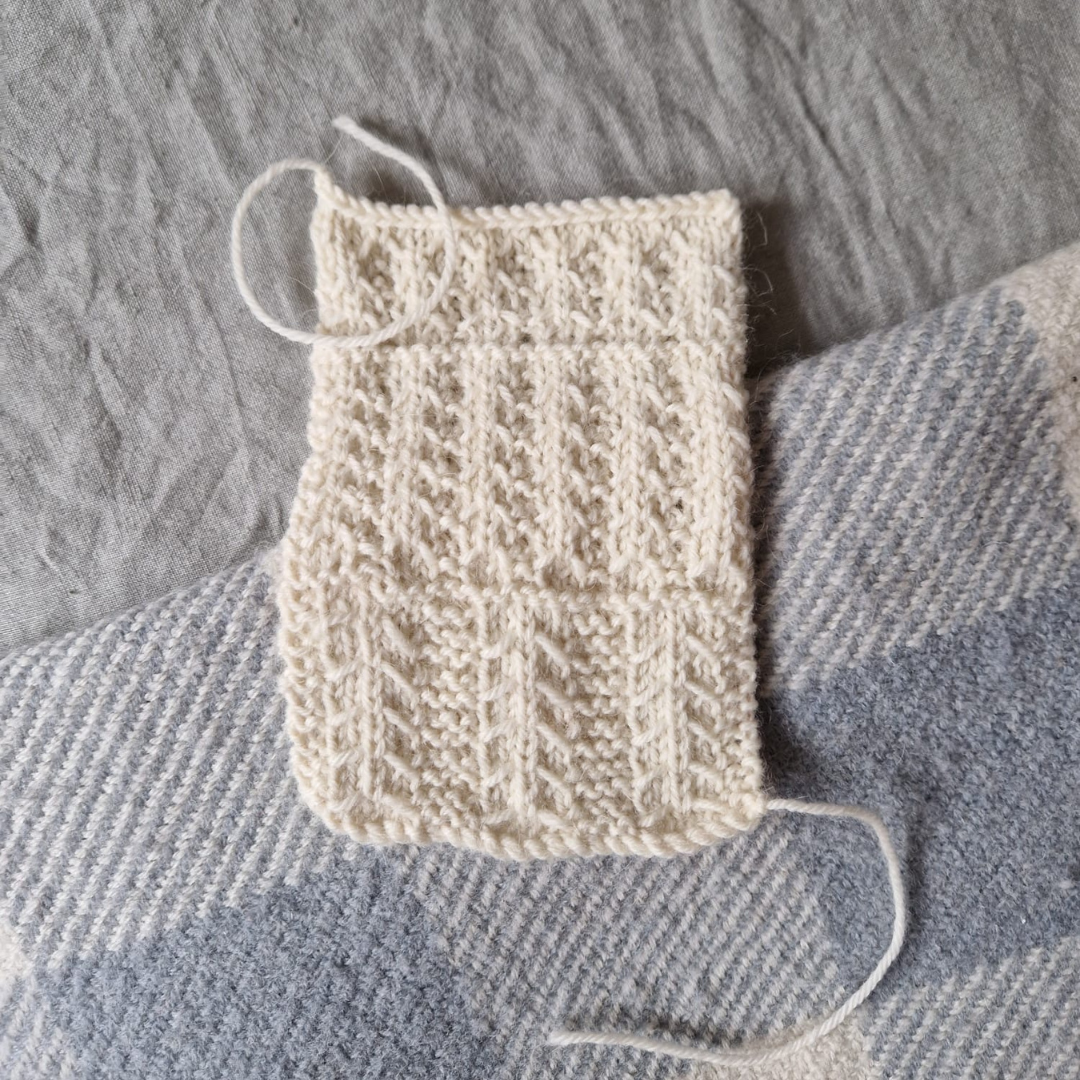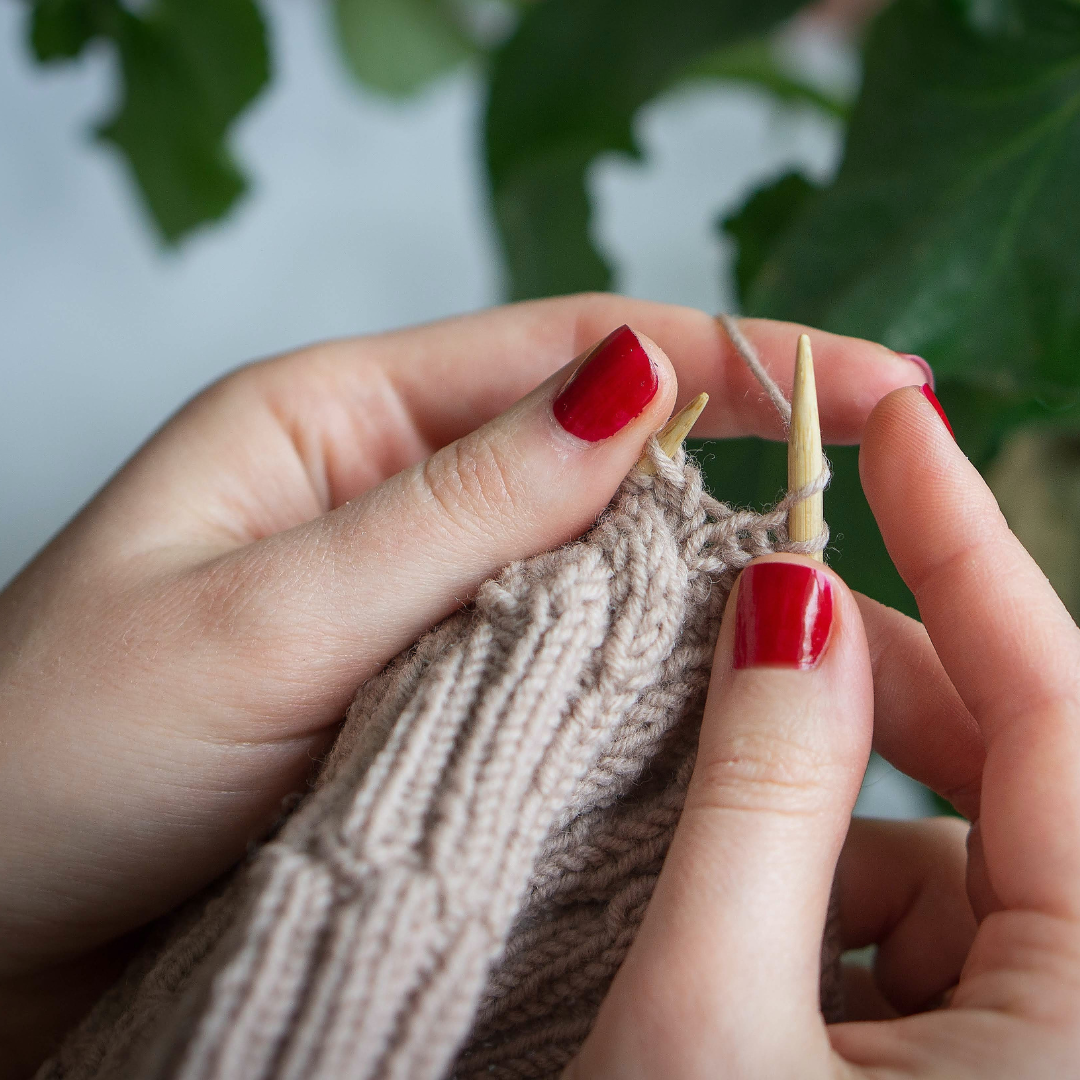How to Find Your Signature Style as a Knitting Pattern Designer
Finding your signature style as a knitting pattern designer is a journey, not a destination. It helps you to discover and embrace what makes you unique. Beyond standing out in the crowd, it's ultimately about finding joy and fulfillment in your work.
In this blog post, I’ll share my experiences, insights, and tips to help you find your own signature style. Whether you’re just starting out or looking to refine your existing style, I hope this guide will inspire and encourage you to lean into what you love and create designs that truly reflect who you are.
Image description: The text says, How to Find Your Signature Style as a Knitting Pattern Designer over a photo showing a woman looking surprised wearing a white ribbed sweater.
How I Found my Signature Style
From the moment I learned to knit, it became my passion. I couldn't put the needles down, and I knew I had found something special.
Thinking about my future, I couldn’t see myself doing anything else. I even printed out information about a knitwear design degree and took it to my school careers advisor. That was the start of making my dream a reality.
After a stint in the commercial knitwear industry, I realised I needed to be more hands-on. This brought me back to my true passion: handknitting.
My signature style has been through quite an evolution over the years. As a teenager, I was heavily influenced by Kim Hargreaves, and my work reflected her designs. But during university, I felt the need to stand out among my peers, so my work took on a more avant-garde approach.
Today, my designs are simpler, but they still carry the special details and interesting constructions I picked up during my time in the fashion industry. Overall, my style is characterised by a sense of ease and comfort.
Image Description: A woman is in a field at golden hour wearing a great cable sweater tucked in to jeans. The text says, How to Find Your Signature Style as a Knitting Pattern Designer
Why do you need a signature style?
Your signature style is your guiding light in the knitting pattern design world. It sparks new ideas and ensures your work reflects who you are as a designer.
Having a signature style isn't about following trends or mimicking what others are doing. It's about finding what makes you unique and leaning into that. This personal touch not only makes your designs stand out but also brings a deeper sense of satisfaction to your work.
For me, having a signature style has been crucial. It sets me apart from other designers and helps me build a connection with knitters who appreciate my work. When someone enjoys one of my patterns, there's a good chance they'll like my other designs because they share that consistent style. It's a way of creating a loyal following who knows what to expect from my patterns and looks forward to my new releases.
Discovering your signature style involves exploring what you love and what resonates with you. It's a journey of self-discovery and expression. Over time, you'll develop a set of design principles that guide your work, making it uniquely yours. This process helps you stay true to yourself and avoid the trap of simply doing what everyone else is doing.
How to Discover Your Design Style
Discovering your unique style as a knitting pattern designer is a deeply personal journey. It means exploring what you genuinely love without judgement. Here are some steps to help you along the way:
Immerse in Inspiration
Use Pinterest to create mood boards filled with images that catch your eye.
Look for common threads that reveal what truly resonates with you.
Explore magazines, not just those related to fashion or knitting but also other aspects of visual culture that you’re drawn to.
Analyse Your Own Work
Identify your favourite designs and ask yourself why you love them.
Review your released patterns to see which ones you keep returning to.
Consider your personal style in clothing and decor as they often reflect your design preferences.
Incorporate Personal Interests
Let your niche interests and passions subtly influence your designs.
For example, I am interested in interior design, specifically the work of Beata Heuman. Whilst most people wouldn’t pick up on it, she has significantly influenced my use of colour, texture, and playful details.
Embrace Experimentation
Regularly try new elements and techniques to keep your style evolving.
Understand that some experiments will become part of your signature style while others may not.
Stay open to change and allow your style to grow naturally.
Finding your signature style means leaning into what you love and being willing to explore and experiment. It's not about forcing yourself to be “different”; it's about letting your true preferences and inspirations guide you. This approach ensures that your work remains fulfilling and uniquely yours.
How to Identify Your Preferences
Identifying the techniques and patterns you enjoy most is a key part of developing your signature style. Here are some steps to help clarify your preferences:
Knit Other Designers' Patterns
Experiment with different designers' works to learn new techniques and constructions.
This helps you understand what you like and dislike, making it easier to clarify your own preferences in a more objective way.
Incorporate Favourite Textures, Colours, and Techniques
Use your design principles to naturally integrate your favourite elements into a cohesive style.
For example, I follow the "rule of three" in my designs—limiting to three key design details to avoid fussiness and maintain consistency.
Draw Inspiration from Various Sources
Let your interests in other fields influence your knitting designs.
Outside of knitting, I adore early 00s emo and post-hardcore music, as well as watching people play D&D on YouTube. Visually, there are lots of ways I can bring these influences into my own work.
Understand and Apply Your Preferences
Explore different elements to understand what you love.
Apply these preferences consistently in your designs to create a cohesive and evolving body of work.
By following these steps, you can identify and incorporate your preferences into your designs, creating a signature style that feels true to you and evolves naturally over time.
Image description: Woman in her studio planning a new design. She wears wide leg emerald green trousers and an orange tshirt.
Building Up a Catalogue of Designs
Building up a collection of designs is a personal and fulfilling process. It's not just about seeing what resonates with others, but also ensuring your work reflects what you love and enjoy. For me, building my catalogue of patterns has been more about personal connection than following trends.
When designing a new pattern, I consider several factors. The time of year and current trends in the knitting world are important, but they aren’t everything. I also look at what has been popular in my past designs and what has received positive feedback from knitters. Most importantly, I think about what inspires me at that moment. If I’m not excited about a project, I won’t be motivated to work on it.
Your designs are a representation of your signature style and passions. If you find joy in your work, that enthusiasm will come through and resonate with others. Your collection of knitwear designs tell your story as a designer. Each piece reflects your unique style and the principles you hold dear in your design process.
In the end, a big part of your portfolio is for you. Yes, you want knitters to buy and enjoy your patterns, but it should also be something you’re proud of, a collection of work that makes you happy and reflects your taste. It's a living, evolving representation of your signature style, and as your style evolves, so should your designs.
Should other knitters influence my signature style?
Feedback from the knitting community has been invaluable in my career as a designer. When it comes to fit and pattern writing, hearing from knitters helps me refine and improve my patterns. However, when it comes to style, feedback can be more subjective.
For me, I’m more interested in how I respond to my work—does it make me proud? Do I want to wear it? Does it feel like me?
Of course, hearing what knitters love about my patterns is always rewarding. It’s helpful to see which aspects of my designs they appreciate, and I often consider how I can incorporate those elements into future projects. This feedback loop helps me grow as a designer while ensuring that my work continues to resonate with my audience.
I love seeing what's popular, but I don’t believe in chasing every trend. Instead, I focus on the trends that resonate with me and put my own spin on them. This approach allows me to stay true to my style while also staying relevant.
In the end, the feedback and support from the knitting community help me refine my designs and stay connected to what knitters want. But the most important feedback still comes from within—how I feel about my work and whether it reflects my true self.
The Evolution of Your Signature Style
Maintaining consistency in my designs while allowing for evolution has been a balancing act. For me, it all comes down to my core design principles. These principles aren't rigid rules but flexible guidelines that help keep my work cohesive.
For instance, I love turning functional aspects of a design into aesthetic details. This approach keeps my designs recognizable and true to my style without feeling restrictive.
Consistency doesn’t mean my work stays the same. My style has evolved significantly over the years, and I expect it to keep evolving. I embrace new ideas and techniques as they come up, integrating them into my work in a way that feels natural. This evolution keeps my designs fresh and exciting, both for me and for the knitters who follow my work.
It’s important to allow yourself to change and grow as a designer. I know that sometimes people hold onto the "good old days," just like fans reminisce about the early albums of their favourite bands. But just as those bands evolve, so do we. Our lives change, our perspectives shift, and our work should reflect that. Embracing this change has opened up new and exciting design possibilities for me.
The key is to have a few guiding principles that ground your work, while remaining open to new influences and ideas. This approach allows for both consistency and evolution, ensuring that your designs stay true to your signature style while continuing to grow and develop. It’s a dynamic process, one that keeps me engaged and passionate about my work.
Ultimately, your style is a living, breathing entity that evolves with you. By staying true to your core principles and embracing change, you can create a body of work that is both consistent and ever-evolving. This balance keeps your designs authentic and exciting, for both you and your audience.
Conclusion: How to Find Your Signature Style as a Knitting Pattern Designer
Finding your signature style as a knitting pattern designer is a journey worth taking. It’s not about reaching a final destination but about continuously exploring and refining what makes your work uniquely yours.
If you're just starting out, don't feel pressured to define your style immediately. Instead, focus on gaining experience and understanding the fundamentals of pattern design. Designing your first knit pattern is a significant step in this process, offering you practical insights and helping you discover what resonates with you.
Take your time to experiment and know that your style will evolve. The more you work on this, the stronger your convictions will become, and the more confident you'll feel about trusting your own ideas. Embrace changes as they come, and allow your designs to grow with you.
I’d love to hear about your experiences and inspirations. What has your journey towards discovering your signature style been like? Share your stories, favourite designs, or mood boards in the comments below!




